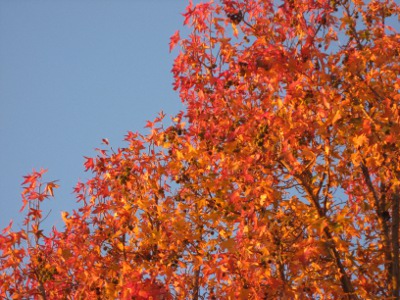American Sweetgum Tree
Category: Deciduous Trees

Facts about American Sweetgum Tree, "Scientific name for American Sweetgum Tree is Liquidambar styraciflua". Also called hazel pine. The American Sweetgum is a deciduous tree from the genus Liquidambar. The American Sweetgum Tree is commonly found in North America and most tropical regions especially areas around Mexico. In the United States, Sweetgum is highly regarded as one of the significant forest trees. Its leaves are shaped in a five pointed star format and its fruits spiked. American Sweetgum Tree belongs to the family Altingiaceae.
Geographical Distribution of American Sweetgum Tree
American Sweetgum Tree is one of the forest trees that enjoy a wide geographical distribution especially in the southeastern part of the United States. American Sweetgum Tree grows naturally and in areas of moderate altitudes. However, the American Sweetgum Tree does not do well in colder areas. Other countries where the American Sweetgum Tree grows include Mexico, Nicaragua, Salvador, Honduras and Guatemala. The American Sweetgum Tree does well in temperate and humid climates.
The American Sweetgum Tree Size
The American Sweetgum Tree also known botanically as Liquidambar styraciflua is medium sized with some other tree species growing to large sizes depending on the immediate environment. When cultivated, they grow to a height of between 33 to 50 feet (10.05 to 15.24 meters). In the wild, it can attain a height up to 150 feet (45.72 meters). The diameter of its trunk measures 2 to 3 feet (.60 to .91 meters) and its lifespan averages 400 years.
A Full grown American Sweetgum Tree can absorb as much as 48 pounds (21.77 kg) of carbon dioxide a year. The same tree could also produce enough oxygen in a day for two people. In a single day, a large American Sweetgum Tree can drink up to 100 gallons (378.5 liter) of water from the ground and discharge it into the air.
You can tell a American Sweetgum Trees age by the number of growth rings. Growth rings size shows what kind of conditions accrued that year, the temperature and if it was a dry or wet year.
The shape of the American Sweetgum Tree is symmetrical and after two years of growth, the branches become heavy forcing it to take an egg shape.
American Sweetgum Tree leaves are made up of many colored pigments, green chlorophyll hides the colors during the growing season of spring and summer. As days get Shorter and cooler temperatures come in the fall, it cause the chlorophyll to break down and than the other color pigments can be seen.
American Sweetgum Tree growth is referred to as Meristem (The undifferentiated embryonic plant tissue from which new cells are created, as that at the tip of a root or stem). This tissue can be found at the tips of shoots and leaves. Inside the stem growth in thickness occurs at the vascular cambium.
American Sweetgum Trees make their own food from sunlight, carbon dioxide, water, and nutrients from the soil.
Bark and Branches of American Sweetgum Tree
American Sweetgum Trees twigs and branches are noticeably small. The bark has a light brown coloration but at times it may take red or grey colors. One cubic foot of the bark weighs approximately 37 lbs (16.78 kg). The branches are deep fissured and carry layers of cork. One drawback of the American Sweetgum Tree is that its branches may have ridges resulting into a larger surface area. This becomes a problem particularly during winter because the snow accumulates on these branches causing an increase in weight.
The leaves usually have five to seven lobes that are sharply pointed. Their width measures between 3 to 5 inches (7.6 to 12.7 cm).
ts it from the elements and is made up of dead cells.
American Sweetgum Tree roots usually grow two to three times the width of the tree branches. The ideal time to fertilize your American Sweetgum Tree is in late fall or early spring. If you want to transplant a American Sweetgum Tree do it in fall, this is ideal for most trees.

 Back To Category Deciduous Trees
Back To Category Deciduous Trees